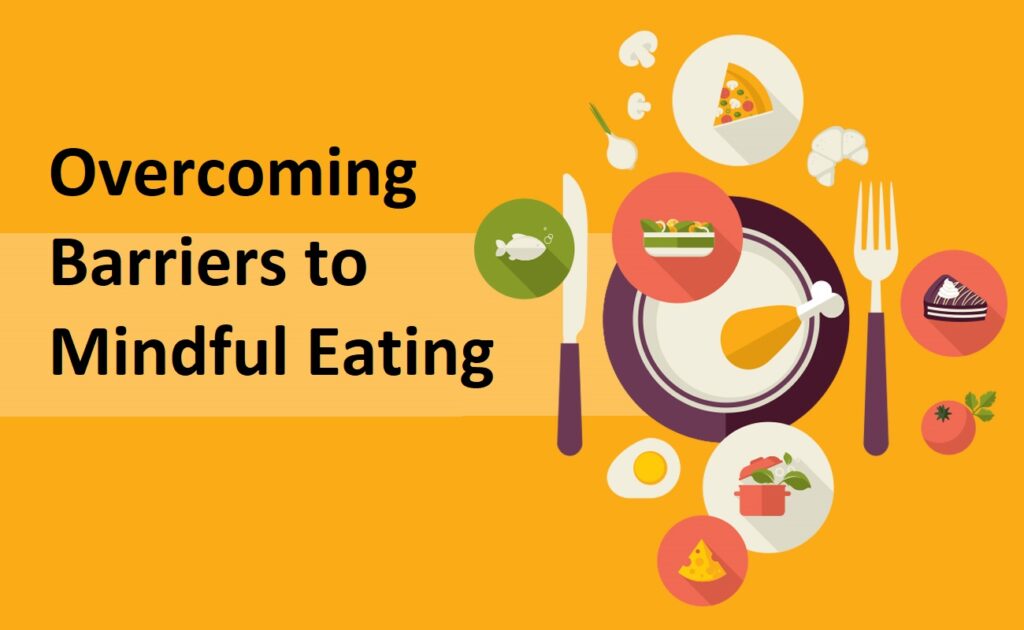The Science-Backed Benefits of Mindful Eating for Weight Loss and Wellbeing
Mindful eating is a powerful tool for building a healthy relationship with food and your body. Learn how the practice helps you tune into your body’s natural hunger cues, prevents overeating, improves digestion, reduces stress-eating, fosters intuitive eating, and promotes sustainable weight loss.
With our busy modern lifestyles, it’s easy to eat on autopilot without being fully aware of the process. We multitask through meals, eat when distracted or emotionally triggered, ignore internal satiety signals, and override our body’s innate hunger wisdom. This mindless eating can lead to making poor food choices and overeating.
The solution is mindful eating – the practice of paying close attention to each bite with all your senses. It creates self-awareness around why, when, what, where, and how much we eat. Mindful eaters don’t judge themselves for cravings or getting carried away on occasion. Instead, awareness helps them course-correct behaviors that don’t serve their health.
What is Mindful Eating?

Mindful eating is the practice of paying purposeful, non-judgmental attention to the tasting experience, sensory qualities, cognitive/emotional triggers, and physical cues involved in eating.
With mindful eating, you tune into the colors, smells, flavors, textures, sounds, and even the “mouth-feel” of each bite. You notice the effects of the food, like changes in energy, mood, or fullness. This mind-body awareness prevents mindlessly overconsuming.
The keys of mindful eating include:
- Eating slowly and without distraction
- Listening to physical hunger cues
- Choosing satisfying amounts of nutritious foods
- Minimizing guilt or anxiety around food
- Ending eating when comfortably full
- Coping with cravings constructively
This mindset allows us to reconnect with the natural wisdom of our body so we eat what we need when we need it. It helps prevent both under-eating from restriction or overeating from scarcity fear.
You enjoy each bite without judgment or attachment to food rules. This freedom fosters a healthy, relaxed relationship with eating.
Why Mindful Eating? The Benefits
With hectic modern life, many of us have lost touch with our body’s innate signals around eating. We override internal satiety cues and react to external triggers instead of physical hunger. This can lead to overeating, emotional eating, binging, food anxiety, chronic dieting, digestive issues, and weight gain.
Research shows mindful eating helps correct these unhealthy dynamics and promote wellbeing. Here are science-backed benefits of tuning into your body’s signals around food:
1. Encourages Intuitive Eating
Intuitive eating means trusting your body to guide your food choices. You eat based on internal signals of real hunger rather than external rules or restrictions. Mindful eating tunes you into hunger and fullness cues which enables intuitive eating. Studies show intuitive eaters have lower BMIs, reduced disordered eating, enhanced body image, and trust their body wisdom around food.
2. Reduces Impulsive Eating
Impulsive eating is when we react to triggers like emotions or food availability instead of eating intentionally. One study found just 5 minutes of mindful eating decreased impulsive eating of high-calorie foods by 35%. Mindfulness puts space between the impulse to eat and action allowing more intentional food choices.
3. Lessens Stress Eating
Stress takes a major toll on eating habits. Up to 40% of people report overeating in response to stress. Mindful eating strengthens awareness around stress-induced eating urges which empowers you to choose constructive alternatives to handling stress. Research confirms mindful eating helps reduce eating in response to distress.
4. Decreases Binge Eating
Binge eating is consuming unusually large amounts of food while feeling loss of control. It’s driven by emotional factors more than hunger. Studies demonstrate mindful eating reduces binge frequency by helping people identify triggers, tolerate cravings, and calm difficult emotions without using food.
5. Lowers Overeating and Food Addiction
Mindless eating often leads to overconsumption of processed junk foods high in fat, salt, and sugar which light up the brain’s reward pathways. This can create addictive-like eating habits. Mindful eating helps prevent mindless overconsumption and reduces addiction-like eating behaviors.
6. Helps Digestion
Eating while rushed, stressed, or distracted negatively impacts digestion. The body’s gut-brain connection works optimally when relaxed. Mindful eating allows digestion to work most efficiently because you’re in a calm, focused state. Studies confirm mindful eating improves multiple aspects of digestion.
7. Aids Weight Loss and Maintenance
By preventing impulsive and emotional eating, binging, and overconsumption, mindful eating supports sustainable weight loss for the long-term. Research confirms mindful eating helps with losing excess body weight and keeping it off by retraining eating habits. Regular mindful eating is also linked to lower body mass index (BMI).
8. Boosts Nutrition
People who eat mindfully consume fewer calories from sweet foods and saturated fats while eating more fruits, veggies, and whole grains – foods that actually nourish the body and brain. Mindful eating supports overall nutrition because you choose quality fuel over junk food when tuned into your body.
9. Reduces Food Guilt and Anxiety
Chronic dieting often breeds anxiety and guilt around food. The restrictive mindset backfires, leading to distress around eating and shame when you “mess up”. Mindful eating reduces food guilt and angst. You don’t label foods as “good” or “bad” which relieves psychological burden.
10. Improves Body Image
Poor body image often leads to dysfunctional eating patterns in an attempt to control weight. Mindful eating helps people feel at peace with their body. Letting go of body criticism while connecting to internal cues allows you to care for your body through diet, rather than force it to conform.
As you can see, mindful eating offers far reaching benefits beyond weight management. It transforms your relationship with food and body to support both physical health and mental wellbeing.
Elements of Mindful Eating

Mindful eating consists of purposeful awareness around all aspects of the eating experience. Here are key elements to focus attention on:
Physical sensations – Notice texture, taste, smell, temperature, mouth-feel, energy changes, digestive effects.
Appearance – Observe colors, presentation, shape, size, visual appeal before tasting food.
Thoughts & feelings – Note thoughts and emotions triggered by eating. Are you eating to avoid stress or loneliness or celebrate an occasion?
Hunger cues – Check in with your stomach. Are you physically hungry or thirsty? Rate your hunger on a 1-10 scale.
Fullness cues – Notice stomach distention and satisfaction signals as you eat. How full do you feel on a scale of 1-10?
Food choices – Consider why you chose a particular food. Does it nourish your body and align with nutrition goals?
Eating behaviors – Recognize if you’re eating hurriedly, unconsciously, emotionally, or past fullness. Pause and check in.
Surroundings – Pay attention to where you’re eating. Does the ambiance encourage you to eat slowly and mindfully?
How to Practice Mindful Eating: 10 Tips

Integrating mindful eating into daily life is simple once you get the hang of it. With some concerted practice, it quickly becomes second nature. Here are some easy tips for eating mindfully anytime:
1. Have a mindful moment before eating
Take a few seconds of stillness to check in with your body before picking up utensils. Scan your hunger level, emotions, stomach sensations. This shifts you into a mindful headspace.
2. Slow down
Eat slowly, savoring each bite without rushing. Set utensils down between bites. Concentrate fully on the textures and flavors as you chew thoroughly. Slowing down prevents mindless overeating.
3. Eliminate distractions
Don’t eat while working, watching TV, scrolling your phone, or driving. Distraction leads to mindless eating. Give meals your full attention so you tune into satiety signals.
4. Pause periodically
Every few bites, pause to check in with your stomach. Rate your hunger and fullness on a scale of 1-10. Stop when you feel comfortably satisfied, not stuffed.
5. Observe without judgment
Notice any thoughts or emotions that arise as you eat without judging them as good or bad. Let cravings or food anxieties pass through your mind without reacting.
6. Focus on visual appeal first
Before diving in, note a meal’s colors and presentation. Appreciating food visually first encourages slower, more thoughtful eating.
7. Chew thoroughly
Chew each mouthful 20-30 times to bring out flavor and aid digestion. Notice how taste changes throughout chewing. Thorough chewing prevents overeating.
8. Eat silently
Chat minimally during meals. Keep the focus on your food by eating largely in silence. This allows you to tune into subtle sensory details.
9. Follow your gut
Trust your body’s wisdom. Eat what feels truly satisfying in the moment, not foods you “should” eat based on rules or diets. Tune into your gut.
10. Establish mindful cues
Use reminders like a special placemat or music playlist to trigger a mindful headspace at mealtimes. Cues reinforce mindful eating until it becomes automatic.
Mindful Eating Exercises
Specific exercises build mind-body awareness around eating even further. Try these mindfulness practices at your next snack or meal:
Hunger awareness meditation – Sit quietly and turn focus inward before eating. Notice stomach sensations. Are you truly hungry? Rate it 1-10. Let this awareness guide whether and how much to eat.
One-bite experiences – Take a single small bite of food. Chew slowly focusing intently on detecting every flavor nuance and texture. Repeat with another bite, noticing how the experience differs.
Blind tasting – Wear a blindfold or close your eyes while eating. Concentrate fully on tasting without visual input. See how flavors come alive when you remove the sense of sight.
Eat with non-dominant hand – Use your non-dominant hand to pick up food and guide utensils. The novelty helps you pay closer attention to each bite.
Describe your food – Verbally describe a food’s taste, texture, aroma, appearance before eating it. Vividly depicting sensory details enhances your eating experience.
Thank your food – Express gratitude for the food before eating. Appreciating your meal’s origins and nourishment value inspires greater care and focus while consuming it.
Mindful snacking – When snacking, eat each treat separately with full awareness. Notice how the taste changes across sequential bites. This prevents mindlessly plowing through a whole package of snacks.
Tune into cravings – Notice cravings without immediately reacting. Sit with the desire mindfully, rating its intensity. Often just acknowledging a craving without judgment lessens its power over you.
Hunger surfing – When a craving strikes, pause before eating. Check if you’re physically hungry. If not, ride out the urge like a wave, feeling it peak and subside. This builds tolerance for resisting impulse eating.
Emotional awareness – If you suddenly feel an urge to eat, pause. Identify underlying feelings driving it. Label emotions like boredom, anxiety, stress. Address them directly rather than numbing with food.
Creating a Mindful Eating Environment
Your surroundings significantly impact eating habits. Certain environments naturally trigger mindless eating while others prompt mindful consumption. Set yourself up for success with these tips to cultivate a mindful eating space:
Eat at a table – Always sit down at a table to eat. Hunched over a kitchen counter encourages a mindless “in and out” mentality. A proper place signals it’s time to eat consciously.
Turn off screens – Keep TVs, phones, laptops out of sight during meals so you don’t get drawn into digital distraction. Screens divert your attention from eating.
Play relaxing music – Calm instrumental music played softly in the background encourages mindful presence while eating. Upbeat music tends to rush the process leading to inattention.
Use smaller plates – Eating from oversized plates leads to bigger portions and overeating. Smaller plates trick your mind into feeling pleasantly full with less.
Minimize clutter – A clear eating space free of clutter promotes focus. Messy counters filled with items that grab your gaze can trigger mindless eating.
Improve lighting – Low lighting encourages mindless overindulgence. Bright, natural light keeps you alert and aware. Lighting impacts how much you eat.
Declutter serving surfaces – Keep food serving areas free of distracting items and excess options. Excessive food visibility prompts mindless grabs and overportioning.
Use mindfulness cues – Place notes, chimes, objects in your line of sight as reminders to eat slowly, without distractions and with full presence. Visual cues keep you on track.
Optimizing your eating environment goes a long way towards reinforcing mindful eating habits long-term.
Overcoming Barriers to Mindful Eating

Change is rarely easy. Old mindless eating habits can feel hard to break. With concerted effort, mindful eating becomes your new normal. Here are tips for overcoming common barriers:
Not enough time – Even five minutes of mindful eating makes a difference. Start by focusing fully during your first few bites and last few bites of a meal. Gradually expand.
Feeling self-conscious – Mindful eating often feels awkward at first. Remind yourself it’s about listening to your body, not public perception. The more you practice privately, the more natural it becomes.
Prefer eating alone – Eat with others when possible. Social eating provides check-ins that prevent overeating. If you must eat solo, use reminders to pause and check hunger cues.
Love distractions – If you crave stimulation like TV while eating, compromise. Watch a complex non-food show that occupies your mind fully rather than playing passive background noise. This prevents mindless eating somewhat.
Feel too hungry to go slow – Take 30 seconds to breathe and assess real hunger before diving in. Eat initial bites slowly to allow fullness signals to kick in before speeding up. Hunger usually lessens quickly once you start eating.
Love snacking – When snacking, portion snacks into individual bags or bowls ahead of time. Always sit to eat them without doing another activity. Follow mindful eating tips.
Strong cravings derail intentions – When cravings strike, pause before indulging. Rate your hunger. If physically satiated, accept the craving without reacting right away. Distract yourself for 10 minutes first to see if it passes.
Emotional eater – If you eat to cope with stress, identify alternative self-soothing strategies like taking a walk, calling a friend, meditation. Practice coping without food.
Social situations complicate it – In group settings, explain to others you’re working on mindful eating and may eat slower or pause periodically. Their support will help you stay on track.
It takes dedication to overcome mindless eating habits. But each step towards mindful eating progresses your wellbeing. Be patient with yourself and celebrate small wins.
How to Get Started with Mindful Eating
Transitioning into mindful eating takes commitment but doesn’t need to feel intimidating. Begin with small, realistic steps. Progress gradually towards making mindfulness a mealtime norm.
Fight through initial awkwardness – At first, mindful eating will feel unnatural after years on autopilot. Push past the initial discomfort knowing the awkwardness will subside.
Commit to regular practice – Plan to devote a week or two to establishing mindful eating habits. Consistency breeds familiarity faster than sporadic efforts.
Start small – Don’t overhaul your whole diet overnight. Begin by applying one or two mindful eating strategies at select meals. Build from there.
Eat solo initially – Practice privately at first to avoid self-consciousness. Once mindful eating becomes comfortable, integrate it into dining with others.
Use reminders – Place visual cues like notes or objects in your line of sight to remind you to eat mindfully during the practice period.
Keep a log – Track mindful eating efforts and sensations in a food journal. Logging reinforces the practices and helps you spot progress.
Be compassionate – Don’t judge setbacks. Celebrate any positive steps forward. Change happens gradually. Give yourself time and grace.
Make it lifelong – After an initial intensive practice period of 2-4 weeks, work on sustaining mindful eating habits long-term, one meal at a time.
Take the first step now. Your next snack or meal is an opportunity to tune into your body’s wisdom a little more closely. Paying just a minute or two of focused attention to what you eat makes a world of difference.
In Conclusion
In our rushed, distracted modern lives, mindless eating has become the norm. We override internal cues of hunger and fullness and react instead to external triggers leading to overeating, emotional eating, binging, stress eating, and food addiction.
The antidote is mindful eating – the practice of paying full attention to each bite with all your senses. It allows you to reconnect with your body’s innate signals around food.
Extensive research confirms mindful eating promotes healthy eating habits. It reduces impulsive eating, binging, stress eating, and overeating. Mindful eating also aids digestion, intuitive eating, nutrition, and long-term weight loss.
The habit requires slowing down and eliminating distractions to fully focus on every taste, texture, sight, smell and how food makes your body feel. But the process quickly becomes second nature with concerted practice.
Optimizing your eating environment, using mindfulness cues, and participating in mindful eating exercises helps the behavior stick.
Committing to an initial period of intensive practice is key to replacing old mindless eating patterns with new mindful ones. With patience and compassion, you can achieve lasting transformation of your relationship with food.
